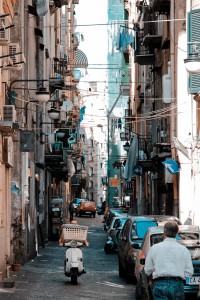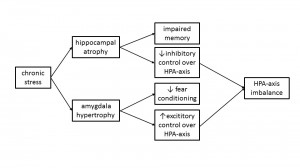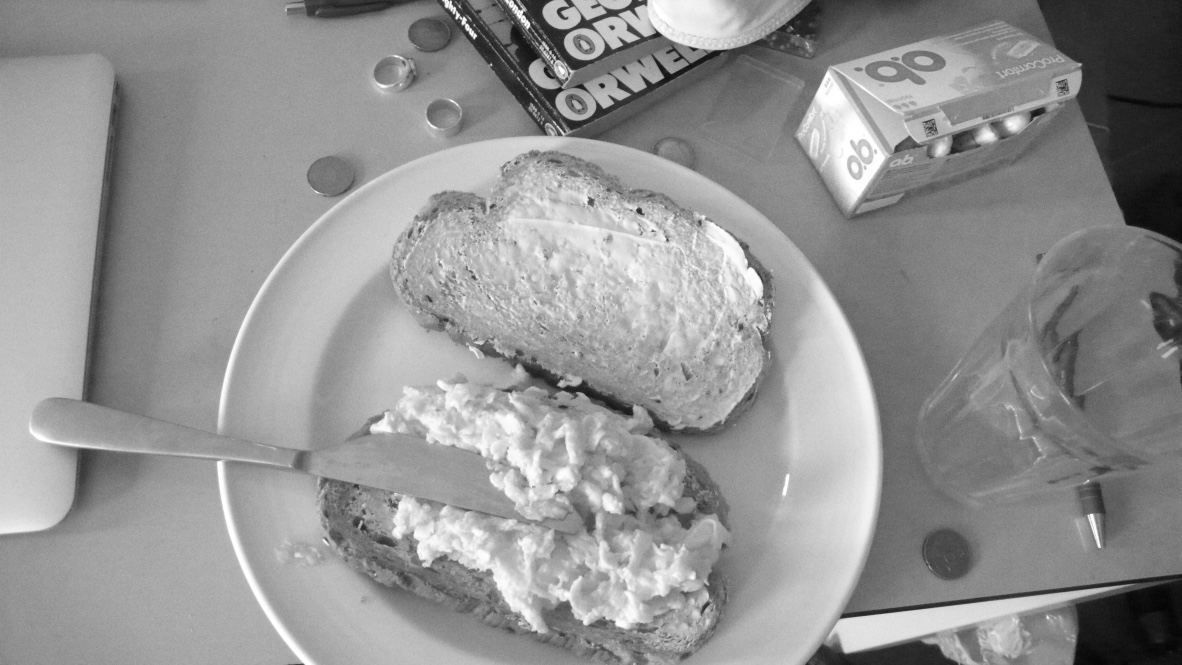The ‘Happening’
An appealing aspect of every city is it’s ‘happening’. This could be translated here as: there’s movement, conversation, and just plain interaction, negative or positive, whether that be the honking of the horn or just the ‘good morning’ to the elderly man reading the paper at the café. This has always been something that is somewhat comforting, at least to myself. An example of a ‘happening’ city could be Naples, because, the core sidewalk principal that we will mention further into this article is fully in effect, and despite the city having many problems such as waste management, or crime, there is an underlying sense of happening. And of course, something to keep in mind is also the level of comfort each person has when it comes to being close, or around, to borderline illegal activities. The streets are packed, scooters flying up and down the street, people talking, arguing, people exchanging services on the street and not just in shops, the list goes on. This sense of happening helps someone who could be a victim of social isolation feel grounded, balancing between the familiarity of being in cities, and knowing that if there’s something they need to know, if the word is out, the sidewalks will be the first place to find out.
The Internet also plays a part in this in 2017, as it’s a hub of information, but the one thing separates it from a city, is of course, it’s human interaction. And although the information that you get on the city sidewalk is conditioned to whom you’re talking to, and not to thousands of sources, the difference is that you are able to have a human discussion with this person, and not just the long deep stare into a screen, searching until you find something vaguely similar to the answer you were hoping to find from your search engine. This social isolation also occurs because a lot of times, we, or at least I, fall into the mistake of underestimating our fellow humans and assuming they don’t know about my interests, or about what I’m looking for. Chances are, if you risk conversation, they actually will. And if they don’t, oh well, that’s the beauty of discussion. And that’s the beauty of sidewalk chatter, conversation and interaction in the city.
This happening is present in the sidewalks of large cities and mostly the social structure of sidewalk life hangs partly on what can be called self-appointed public characters. A public character is anyone who is in frequent contact with a wide circle of people and who is sufficiently interested to make himself a public character. A public character doesn’t need to have any special talent or wisdom to fulfill his function – although he often does. He just needs to be present. His main qualification is that he be public, and that he talks to a lot of different people, instigating and creating interaction and discussion, leading us to conclude that news actually travels faster in these urban areas, seeing how sidewalks can serve as steady flows of information.
Social isolation in cities, and its virtues and disadvantages
I wanted to find out more about how different people handle stress. I read up on an article that explained that city dwellers’ brains, compared with people who live in the countryside, seem not to handle it so well.
The example given in the article was from a case study by Dr. Meyer-Lindenberg and his colleagues, where, as they were stressing out their subjects, they were looking at two brain regions: the amygdala and the perigenual anterior cingulate cortex (pACC). The amygdala is known to be involved in assessing threats and generating fear, while the pACC in turn helps to regulate the amygdala. It turned out that in stressed citydwellers, the amygdala appeared more active on the scanner; in people who lived in small towns, less so; in people who lived in the countryside, least of all.
Here the important relationship was not with where the subjects lived at the time, but where they grew up. An erratic link between the pACC and the amygdalas is often seen in those with schizophrenia too. And according to the data, schizophrenic people are much more likely to live in cities.
Dutch Dr. Jaap Peen and his team found out in their meta-analysis that living in a city roughly doubles the risk of schizophrenia. To explain inner-city and urban–rural variations in psychiatric morbidity, there are two main theoretical concepts, which originated from the early ecological research of schizophrenia, and from the Chicago School of Sociology: There’s the ‘drift hypothesis’ and the ‘breeder hypothesis.’ The ‘drift hypothesis’ assumes that sick and vulnerable people are more or less doomed to remain in socially unstable, deprived neighborhoods, while better off people move away. On the other hand, socially deprived neighborhoods can also have a pull-function on sick and vulnerable people, as they move to these areas with low social control and greater tolerance towards deviant behavior, this being what they call the ‘social drift hypothesis’.
The second theory, the ‘breeder hypothesis’, assumes that various environmental factors cause illness. These can be physical factors (air pollution, small housing, population density) and also social factors (stress, life events, perinatal aspects, social isolation). A lot of the stress factors mentioned above are more common in urbanized areas. Urbanization is modestly but consistently associated with the prevalence of psychopathology. They even suggest that levels of urbanization should also be taken into account when planning the allocation of mental health services.
“Obviously our brains are not perfectly shaped for living in urban environments,” Dr. Adli says. “In my view, if social density and social isolation come at the same time and hit high-risk individuals … then city-stress related mental illness could be the consequence.”
Cities, the theory goes, might be part of the reason why a person’s dopamine production starts to go wrong in the first place. Repeated stress is thought to lead to this problem in some people, so if high social density combined with social isolation could be shown to do so, and thus to alter the dopamine system, we might have the first rough sketches of a map from city living that leads all the way to schizophrenia, and perhaps other things.
Many other possible impacts of city living on brain function are also being investigated. Aircraft noise might inhibit children’s learning, according to a recent study from Queen Mary University in London. (Although traffic noise, perversely, might help it.) Researchers in the US and elsewhere have also found that exposure to nature seems to offer a variety of beneficial effects to city dwellers, from improving mood and memory, to alleviating ADHD in children.
Privacy
I found that the perfect balance of social isolation between keeping to yourself and social interaction in a city was the ability to be able to wander and explore, go out on the hunt for information, but always have a private base to return to, to let loose and relax. Privacy is precious in cities. It is indispensable. Perhaps it is precious and indispensable everywhere, but in most places around the world you aren’t allowed as much of it. In small settlements everyone knows your affairs. Whilst in the city nobody does, unless you allow them in. This is one of the attributes of cities that is unique to city dwellers, whether their incomes are high or their incomes are low.
According to Jane Jacobs, in her book The Death And Life of Great American Cities, “A good city neighborhood achieves a marvel of balance between its people’s determination to have essential privacy and their simultaneous wishes for differing degrees of contact, enjoyment or help from the people around them. This balance is widely made up of small, sensitively managed details, practiced and accepted so casually that they are normally taken for granted.”
The more common outcome in cities, where people are faced with the choice of sharing much or nothing, is nothing. In city areas that lack a natural and casual public life, it is common for residents to isolate themselves from each other to a marked degree. If mere contact with your neighbors threatens to entangle you in their private lives, or entangle them in yours, and if you cannot be so careful who your neighbors are as compared to people who can be, the logical solution will seem to then be avoiding friendliness or casual offers of help. Better to stay thoroughly distant.
It’s important to recognize that a lot of adults either don’t want to become involved in any friendship relationships at all with their neighbors, or if they do succumb to the need for some form of society, they strictly limit themselves to one or two friends, and no more. And the individualism and privacy that comes with city living makes it possible to choose to be solitary, which a lot of people find hard to deal with, but for a lot of people it is actually a luxury. So compared to town living, where interaction with your neighbors is almost inevitable, city living provides a choice; whether to keep to yourself or to socialize, and this is a choice that for many people can be quite hard to handle.
In light of the increasing push for us to work at home, here’s an interesting statistic from Robert Putnam, a Harvard political scientist and the author of Bowling Alone (which looked at how social ‘glue’ such as bowling clubs, which were so prevalent in 1950s America, have almost disappeared). It comes from a New Yorker article about commuting: “I was shocked to find how robust a predictor of social isolation commuting is,” said Putnam “There’s a simple rule of thumb: Every ten minutes of commuting results in ten per cent fewer social connections. Commuting is connected to social isolation, which causes unhappiness.”
Conclusion
I’ve come to conclude that although I do feel like a very open and city involved person, I need to know that I always have a safe haven to return to, where I can shut the blinds and lock society out for whatever time necessary. And what’s interesting about this in today’s day and age is that although we shut ourselves out, we still have access to the Internet and social networking. Being connected to the Internet let’s us control our interaction with the outside public world. Comparing the Internet to let’s say, the sidewalk interactions of a busy city is quite simple. We have, of course, the human vs. screen interaction, but more importantly, the Internet enables us to be in total control of what we discuss, and more importantly gives us freedom to search for answers from numerous sources instead of resorting to information from whomever is around. This isolation can be healthy or unhealthy for some, depending on who you are and how you deal with it, but without a good balance, it all falls apart.












